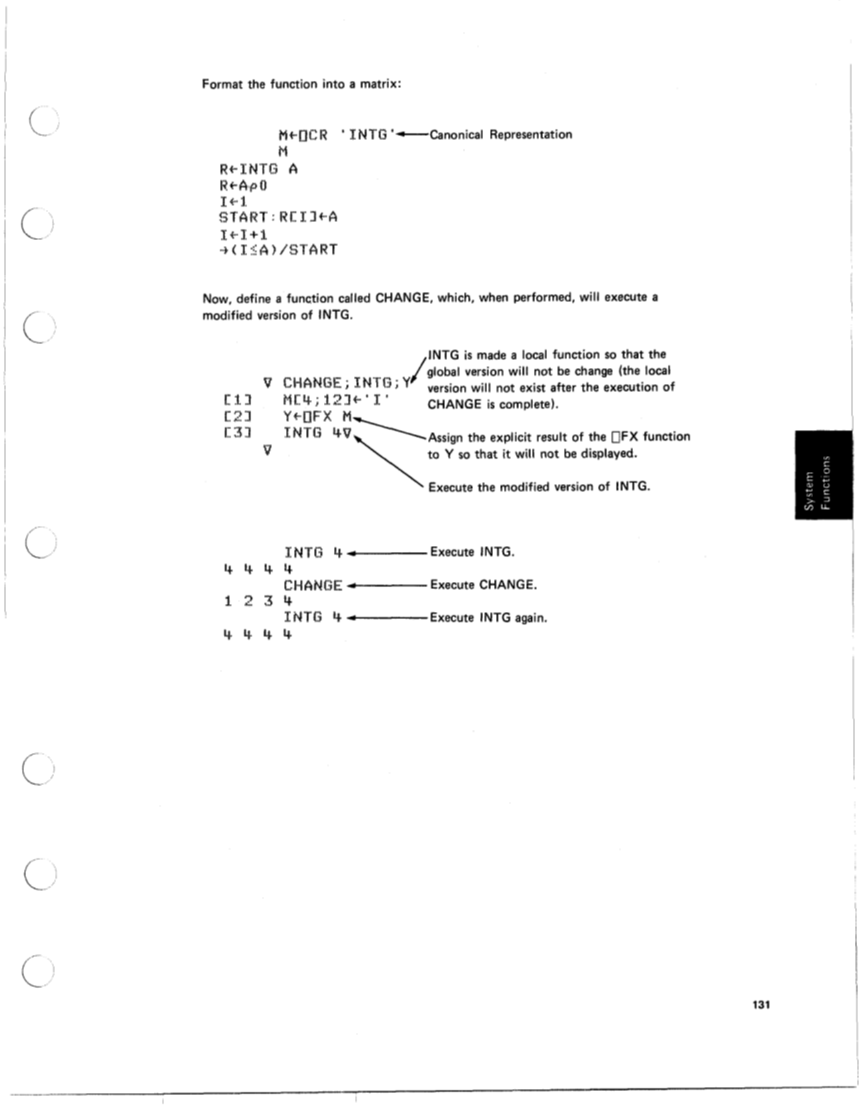To show how the UFX function works, we will use the matrix created in the pre-
vious example (see the UCR function). To form matrix VAR into a user-defined
function, the following instruction would be entered:
1::t F' x v A
R
APL responds with the name of
:I: NTG-the user-defined function.
The OFX function produces an explicit result (the array of characters that repre-
sents the name of the user-defined function), and the original definition of the
user-defined function (if there was one) is replaced.
Now the function INTG can be displayed and executed:
TNTG 5
INTG 8
12345
1. 2 3 4 5 6 7 8
Following is an example that shows how the UCR and UFX functions can be
used to modify the definition of a function within another function. This
example will use the following userdefined function:
130
vious example (see the UCR function). To form matrix VAR into a user-defined
function, the following instruction would be entered:
1::t F' x v A
R
APL responds with the name of
:I: NTG-the user-defined function.
The OFX function produces an explicit result (the array of characters that repre-
sents the name of the user-defined function), and the original definition of the
user-defined function (if there was one) is replaced.
Now the function INTG can be displayed and executed:
TNTG 5
INTG 8
12345
1. 2 3 4 5 6 7 8
Following is an example that shows how the UCR and UFX functions can be
used to modify the definition of a function within another function. This
example will use the following userdefined function:
130









































































































































































































































